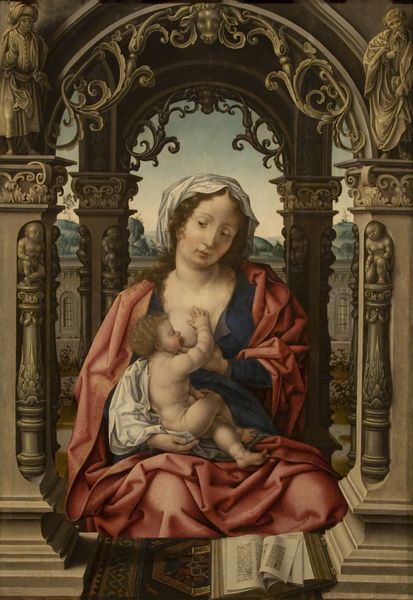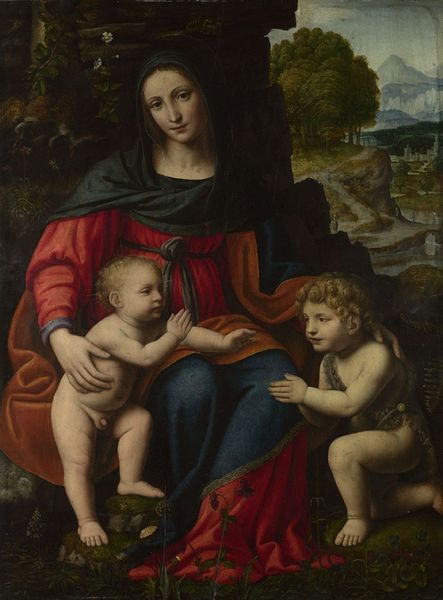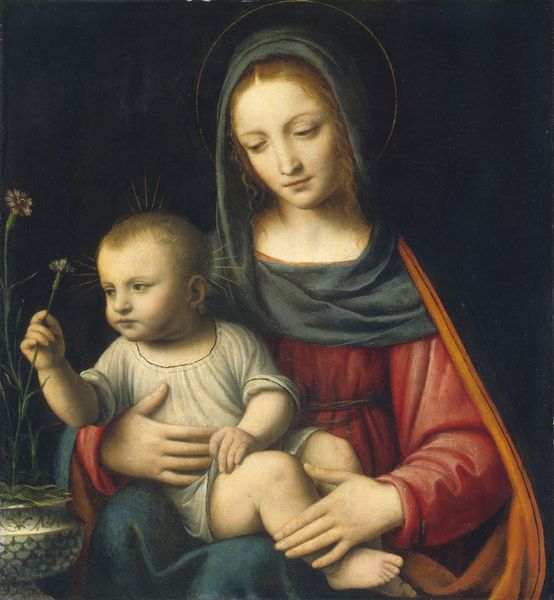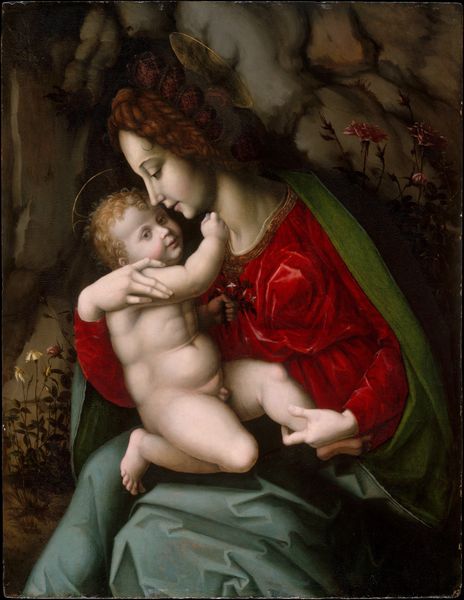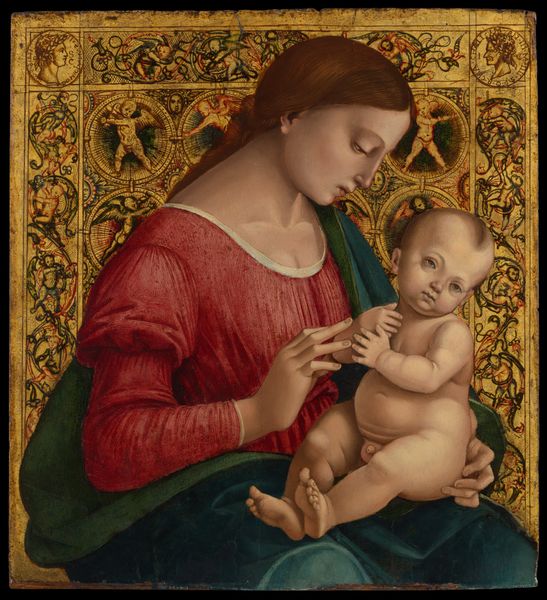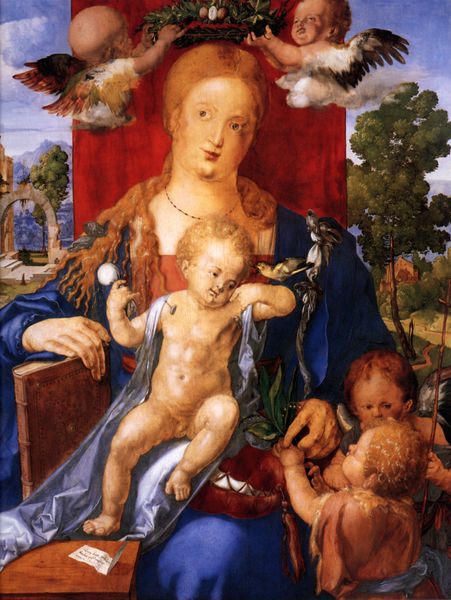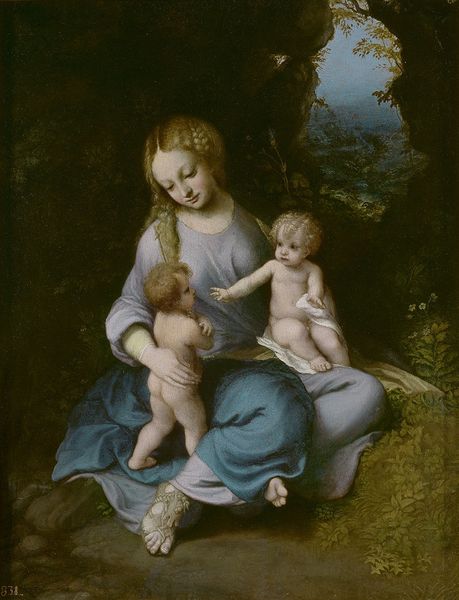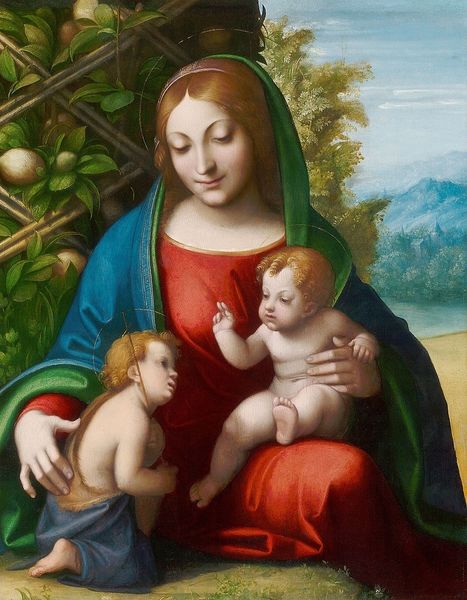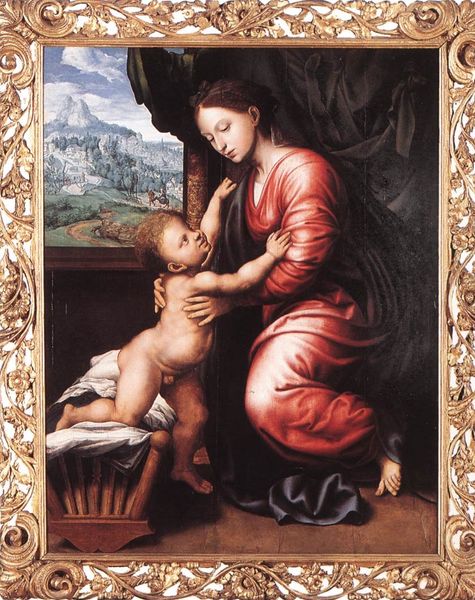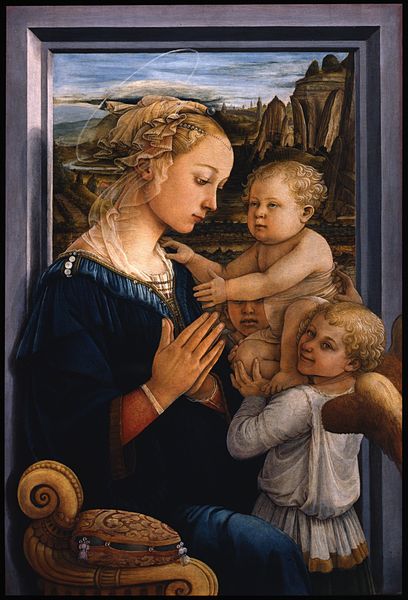
painting, oil-paint
#
portrait
#
high-renaissance
#
painting
#
oil-paint
#
landscape
#
figuration
#
italian-renaissance
Copyright: Public domain
Editor: Here we have "Madonna and Child in a Jasmine Bower" painted around 1520 by Francesco Melzi. It's an oil painting and immediately strikes me as incredibly serene, with the figures nestled in lush greenery. How do you interpret this work, looking at its visual components? Curator: Focusing on the formal elements, note the pyramid-like composition, stabilizing the figures within the pictorial space. The artist orchestrates a delicate balance between light and shadow, creating depth and volume. The contrast between the verdant backdrop and the figures’ skin contributes to the dynamism of the work. Editor: The interplay between the figures and the landscape seems crucial. Curator: Indeed. Melzi meticulously renders the texture and detail of the foliage. Notice the contrast between the smoothness of the skin and the intricate rendering of the jasmine leaves. Are you sensing a push and pull? Editor: Yes, it creates a striking tension! The colour palette also seems significant. Curator: Observe the limited but impactful range of colours—primarily blues, reds, greens, and the variations in skin tones. Melzi skillfully uses this restricted palette to achieve visual harmony. Would you agree? Editor: Absolutely, it creates a cohesive and balanced aesthetic. The use of colour draws the eye, creating a holistic, sensory experience. Curator: Precisely! And one should think about how this harmony gives this piece its distinctive beauty and serenity. It all begins and ends with visual language. Editor: It's amazing how much we can glean just from a close look at the formal aspects of the piece. I’ll definitely remember this approach when viewing art in the future.
Comments
No comments
Be the first to comment and join the conversation on the ultimate creative platform.

